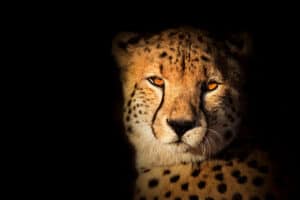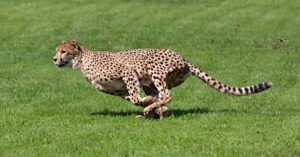Cheetahs are powerful hunters that can run faster than any other animal on the planet. These critically endangered big cats have semi-retractable claws and flexible spines that help them reach a top speed of 75 miles per hour.
In this spectacular high-speed chase, you can see a cheetah hot on a Thompson’s gazelle’s heels. The gazelle dodges left and right, making quick turns in what becomes a futile escape attempt when the cheetah tackles it in the grass.
Predator and prey are locked in an eternal arms race. In the video, a Thompson’s gazelle tries to outmaneuver the cheetah long enough for it to give up. The gazelle only has to run for about 1,600 feet — the same as a 500-meter dash. However, this time the cheetah wins when the gazelle doesn’t turn quickly enough.
Are Cheetahs Endangered?
In short, yes. There are four accepted subspecies and all but the southeast African cheetah have fewer than 500 individuals per subspecies in the wild. However, that doesn’t mean the southeast African cheetah isn’t in danger. The IUCN Redlist classifies it as vulnerable. There are probably less than 4,000 of those in the wild.
How do Cheetahs Run So Fast?
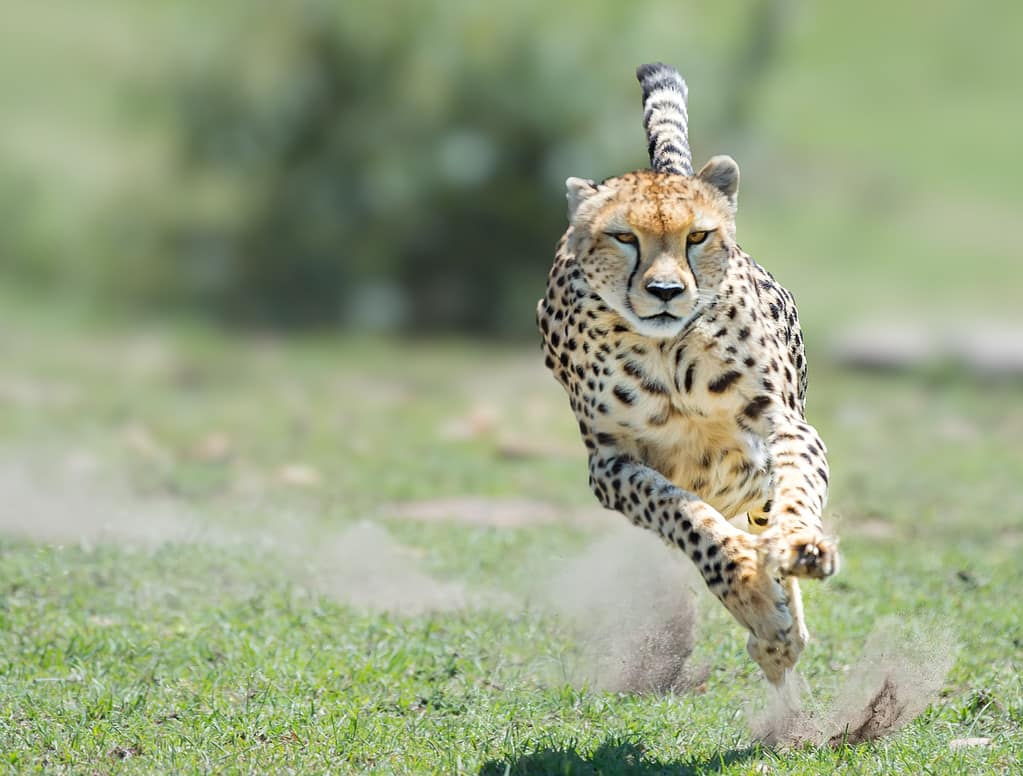
Cheetahs are built for speed, not distance. They can sprint for about 1,600 feet before resting.
©Kandfoto/iStock via Getty Images
While cheetahs are big cats, they are highly specialized big cats and only weigh between 46 and 159 pounds. Their long legs and flexible spines give cheetahs a nearly 23-foot stride length and a top speed of 75 miles per hour. But getting a solid grip to reach that speed is also part of their specialized body — their blunt claws are only semi-retractable and work like an athlete’s cleats, grabbing the ground as they run.
The specialization doesn’t end there — their tail is part of the game too! Cheetah’s tails are proportionately longer than most cats and they use their tails like a rudder to help make quick directional changes during a high speed chase like this one.
However, the cheetah’s speed has a downside: limited distances. Cheetahs can only run at top speed for about 1,600 feet before they must stop. Just like human sprinters, cheetahs can’t run marathons, so if the prey can run and dodge long enough, it wins.
The Cheetah’s Hunting Style
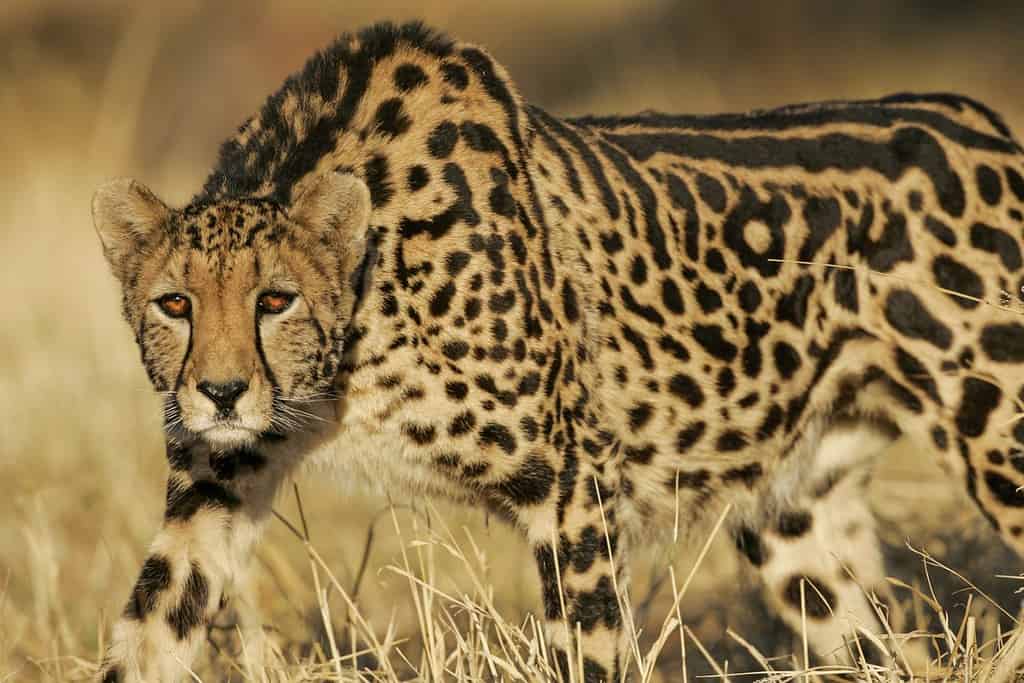
Cheetahs prefer relying on stealth before they use energy to chase down their prey.
©Stu Porter/Shutterstock.com
Like most big cats, cheetahs prefer to stalk their prey before resorting to running it down. Although some young males form groups and hunt in prey-rich territories, females hunt a large territory and are typically solitary. Cheetahs use their natural habitat and wind direction to mask their approach.
These master hunters approach downwind and creep through long grasses, trying to evade detection. Their goal is to get close enough to grab their prey by the throat in their vice-like mouth grip.
When the cheetah is spotted, the chase is on!
Is It Normal for Cheetahs to Prey on Gazelles?
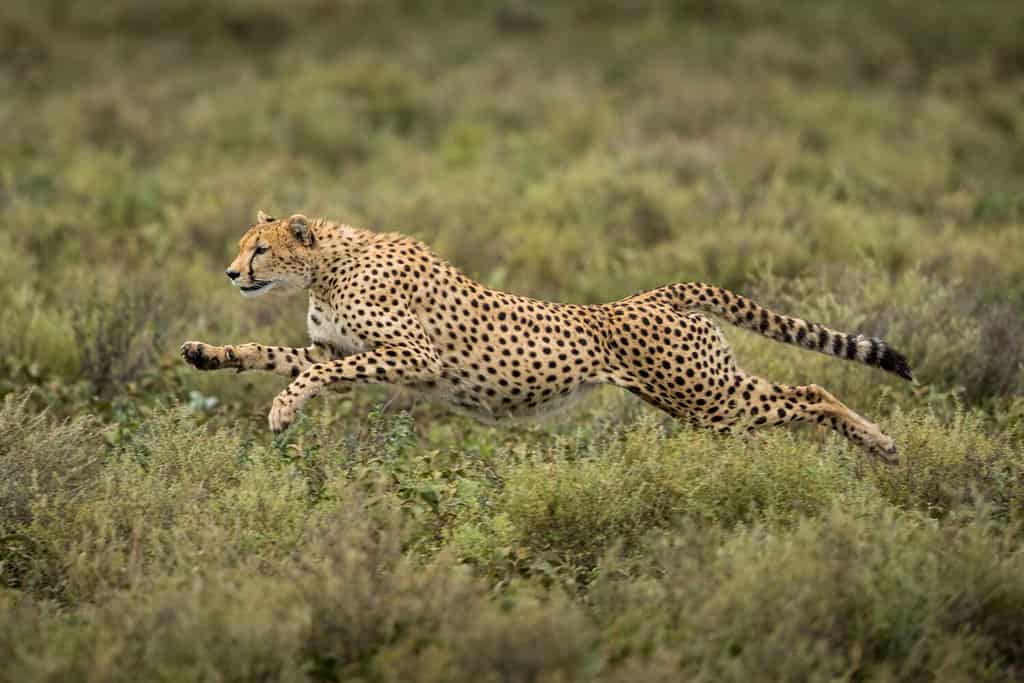
Cheetahs are perfectly built to prey on fast animals like gazelles, impala, and
springbok
.
©Danita Delimont/Shutterstock.com
Yes, it is quite normal for Cheetahs to prey on gazelles. As is evident in the video footage as well as the specialized features of a cheetah we’ve shared, the cheetah is one of the only cats in the animal kingdom that can successfully carry out a chase with such a fast beast as a gazelle due to its speed and endurance in a long chase. Animals like lions and tigers don’t have the stamina to pursue an animal like that, so have to rely on ambush tactics.
Cheetas target other quick prey besides gazelles like impala and springbok. They’ll also target smaller prey when food is more scarce like rabbits and birds. The diet of a cheetah can also be affected by its location. For example, Asiatic cheetahs, a nearly extinct species that only exist in Iran, prey on wild goats, chinkara, and goitered gazelles.
The photo featured at the top of this post is © JonathanC Photography/Shutterstock.com
Thank you for reading! Have some feedback for us? Contact the AZ Animals editorial team.




